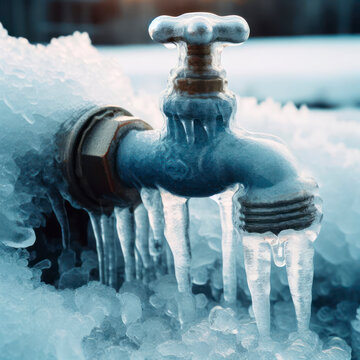What are your beliefs on How to prepare your home plumbing for winter weather?

Cold weather can damage your pipes, particularly by freezing pipes. Below's exactly how to avoid it from happening and what to do if it does.
Intro
As temperatures drop, the risk of frozen pipes boosts, possibly leading to expensive repairs and water damages. Understanding exactly how to stop frozen pipes is critical for property owners in cool environments.
Understanding Frozen Pipelines
What triggers pipes to freeze?
Pipes freeze when subjected to temperature levels listed below 32 ° F (0 ° C) for expanded durations. As water inside the pipelines ices up, it increases, putting pressure on the pipe walls and potentially causing them to burst.
Risks and damages
Icy pipelines can bring about water supply interruptions, building damages, and costly repair work. Burst pipelines can flood homes and cause comprehensive structural damage.
Indicators of Frozen Pipeline
Determining icy pipelines early can stop them from breaking.
Just how to recognize icy pipelines
Seek lowered water circulation from taps, uncommon odors or noises from pipes, and noticeable frost on revealed pipelines.
Avoidance Tips
Shielding prone pipelines
Wrap pipelines in insulation sleeves or make use of warm tape to safeguard them from freezing temperatures. Focus on pipelines in unheated or external areas of the home.
Heating strategies
Maintain interior areas effectively warmed, especially locations with pipes. Open up closet doors to permit warm air to circulate around pipelines under sinks.
Protecting Exterior Plumbing
Yard hose pipes and outdoor taps
Detach and drain garden pipes before winter. Set up frost-proof spigots or cover exterior taps with insulated caps.
What to Do If Your Pipelines Freeze
Immediate actions to take
If you presume frozen pipelines, keep taps open to relieve pressure as the ice thaws. Utilize a hairdryer or towels taken in hot water to thaw pipelines gradually.
Long-Term Solutions
Structural changes
Consider rerouting pipes far from outside walls or unheated areas. Add added insulation to attic rooms, cellars, and crawl spaces.
Upgrading insulation
Invest in top notch insulation for pipelines, attic rooms, and wall surfaces. Appropriate insulation assists preserve constant temperatures and reduces the risk of frozen pipes.
Conclusion
Preventing icy pipelines needs positive steps and quick feedbacks. By comprehending the causes, signs, and safety nets, house owners can safeguard their pipes during winter.
5 Ways to Prevent Frozen Pipes
Drain Outdoor Faucets and Disconnect Hoses
First, close the shut-off valve that controls the flow of water in the pipe to your outdoor faucet. Then, head outside to disconnect and drain your hose and open the outdoor faucet to allow the water to completely drain out of the line. Turn off the faucet when done. Finally, head back to the shut-off valve and drain the remaining water inside the pipe into a bucket or container. Additionally, if you have a home irrigation system, you should consider hiring an expert to clear the system of water each year.
Insulate Pipes
One of the best and most cost-effective methods for preventing frozen water pipes is to wrap your pipes with insulation. This is especially important for areas in your home that aren’t exposed to heat, such as an attic. We suggest using foam sleeves, which can typically be found at your local hardware store.
Keep Heat Running at 65
Your pipes are located inside your walls, and the temperature there is much colder than the rest of the house. To prevent your pipes from freezing, The Insurance Information Institute suggests that you keep your home heated to at least 65 degrees, even when traveling. You may want to invest in smart devices that can keep an eye on the temperature in your home while you’re away.
Leave Water Dripping
Moving water — even a small trickle — can prevent ice from forming inside your pipes. When freezing temps are imminent, start a drip of water from all faucets that serve exposed pipes. Leaving a few faucets running will also help relieve pressure inside the pipes and help prevent a rupture if the water inside freezes.
Open Cupboard Doors
Warm your kitchen and bathroom pipes by opening cupboards and vanities. You should also leave your interior doors ajar to help warm air circulate evenly throughout your home.

I have been very curious about Prevent Frozen Pipes and I'm hoping you enjoyed the blog post. Please take a moment to distribute this post if you enjoyed reading it. Many thanks for taking the time to read it.
Show Details
Comments on “Preventing Frozen Pipes in Winter: Essential Tips”